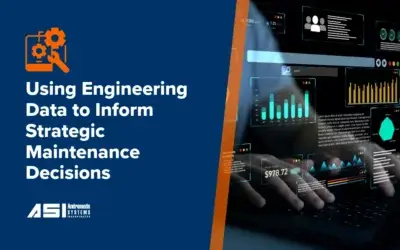In an era defined by technological advancements, the Internet of Things (IoT) has emerged as a groundbreaking force that is reshaping industries across the globe. Among its many transformative applications, one that stands out is its profound impact on smart asset management. In this blog, we delve into the implications of IoT on asset management, exploring how this technology is revolutionizing the way we track, monitor, and optimize valuable assets.
The Essence of Asset Management
Asset management is the practice of monitoring, maintaining, and maximizing the efficiency of physical assets within an organization. These assets can encompass a wide range of items, from machinery and vehicles to real estate and even data centers. Efficient asset management is crucial for organizations aiming to reduce operational costs, enhance productivity, and ensure regulatory compliance.
Traditionally, asset management relied heavily on manual processes, periodic inspections, and paper-based documentation. However, with the advent of IoT, this landscape has experienced a seismic shift.
IoT and Asset Management: A Perfect Union
The Internet of Things refers to the network of interconnected devices, sensors, and objects that communicate with each other and share data over the internet. When applied to asset management, IoT brings several game-changing advantages:
Real-time Monitoring and Data Collection:
IoT-enabled sensors attached to assets can continuously collect data on their condition, performance, and usage. This real-time data allows organizations to make informed decisions, preemptively address issues, and optimize asset utilization.
Predictive Maintenance:
IoT-driven analytics can predict when an asset is likely to fail or require maintenance based on historical data and current performance metrics. This predictive approach minimizes unplanned downtime, reduces maintenance costs, and extends asset lifecycles.
Enhanced Security:
IoT solutions offer advanced security measures to protect valuable assets. Sensors can detect unauthorized access, tampering, or theft, triggering immediate alerts and facilitating a rapid response.
Efficient Resource Allocation:
IoT-powered asset management helps organizations allocate resources more efficiently. With real-time data insights, companies can optimize asset usage, reduce underutilization, and avoid overcapacity.
Compliance and Accountability:
IoT-driven tracking ensures compliance with industry regulations and standards. By maintaining a detailed record of asset activity, organizations can demonstrate accountability and transparency to regulatory bodies.
Case Studies: IoT in Action
Let’s explore a few real-world examples of IoT transforming asset management across different sectors:
Manufacturing:
In manufacturing plants, IoT sensors on machines monitor performance metrics, such as temperature, vibration, and energy consumption. This data helps operators identify potential issues, schedule maintenance, and prevent costly breakdowns.
Healthcare:
Hospitals are adopting IoT to track the location and condition of critical medical equipment. This ensures that life-saving assets like ventilators and defibrillators are readily available when needed, improving patient care.
Logistics and Transportation:
In the logistics sector, IoT-powered asset tracking solutions enable real-time monitoring of shipments and vehicles. This not only enhances security but also improves supply chain efficiency by reducing delays and optimizing routes.
Energy:
Utility companies use IoT sensors to monitor the condition of power distribution equipment. By identifying faults early and scheduling maintenance proactively, they can prevent power outages and reduce operational costs.
Challenges and Considerations
While IoT offers immense potential for asset management, it also presents challenges and considerations:
Data Privacy and Security:
The increased connectivity of assets opens them up to potential cyber threats. Organizations must prioritize data security and implement robust encryption and authentication measures.
Scalability:
As organizations expand, managing a growing number of IoT devices can become complex. Scalable infrastructure and data analytics platforms are essential for long-term success.
Interoperability:
Ensuring that different IoT devices and platforms can communicate seamlessly is crucial. Standardized protocols and open APIs facilitate interoperability.
Cost:
Implementing IoT solutions requires an initial investment in hardware, software, and training. However, the long-term benefits often outweigh the upfront costs.
Conclusion
The Internet of Things is revolutionizing asset management by providing organizations with real-time insights, predictive capabilities, enhanced security, and improved resource allocation. From manufacturing to healthcare, logistics to energy, the impact of IoT on smart asset management is undeniable.
To fully harness the potential of IoT, organizations must address challenges related to data privacy, scalability, interoperability, and cost. As technology continues to advance, the synergy between IoT and asset management will only grow stronger, enabling organizations to optimize their operations, reduce costs, and achieve greater efficiency.
In a world where data is king, IoT is fast becoming the crown jewel of asset management, offering a glimpse into a future where assets are not just managed but truly optimized.
Newest on the Blog
Reliability Engineering: Designing Systems for Maximum Uptime
Keeping systems running without unexpected interruptions is essential for businesses that rely on physical assets. Whether it’s in aviation, defense, manufacturing, or transportation, downtime leads to lost productivity, increased costs, and lower customer...
Using Engineering Data to Inform Strategic Maintenance Decisions
Thoughtful maintenance planning is key to boosting performance and cutting costs in competitive industries. Engineering data plays a central role in this process, providing clear insights into how equipment runs and where improvements can be made. Let's discuss how...
Supportability Engineering: Reducing Life-Cycle Costs Through Strategic Planning
Supportability engineering plays a critical role in efficient systems management from inception to retirement. Supportability engineering employs the procedures and methodologies of supportability analysis to accomplish the planning, development, systems engineering,...



